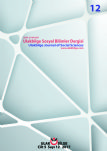ÜÇLÜ SORUMLULUK RAPORLAMASI: BIST 100 ENDEKSİ ÜZERİNDE BİR ARAŞTIRMA
TRIPLE BOTTOM LINE REPORTING: A RESEARCH ON BIST 100 INDEX
Author(s): Utku Şendurur, Semra KaracaerSubject(s): Business Economy / Management, Evaluation research, Socio-Economic Research
Published by: Sanat ve Dil Araştırmaları Enstitüsü
Keywords: Triple Bottom Line Reporting; BIST100; Annual Reports; Regression; ANOVA; T-test;
Summary/Abstract: In 1997, John Elkington moved corporate social responsibility reporting forward and entitled it Triple Bottom Line Reporting and this notion entered into the literature as e new notion. Triple bottom line has got three dimensions. These are economical, social and environmental dimensions of reporting. In this study, these three dimensions are analyzed inside of Triple bottom line reporting notion with examining the firms annual reports which are participating in BIST100 index, their triple bottom line reporting scores are calculated and analyzed the relationship with triple bottom line reporting scores and determinated variables with the help of regression analysis. Besides, it is examined that if there is a significant difference between the groups of determinated variables and also the group of core business of the firms with statistical methods as ANOVA and t-test. In this study, 10 independent variables is used which are expected to be in relation with triple bottom line reporting scores. These are sector, size, country of origin, ownership structure, auditor type, business type, leverage ratio, liquidity, profitability and age.. Studies regressions results shows that there is no significant relation between dependent variables which are triple bottom line reporting scores and sector, ownership structure and business type, but study finds medium and positive relation with size, weak and positive relation with country of origin, medium and positive relation with auditor type, medium and positive relation with age, weak and negative relation with liquidity, medium and positive relation with leverage ratio and medium and positive relation with profitability. In this study it has been observed that, datas are not distribute normally and as a consequence, Mann Whitney U test which is a non parametric test and opposite of T-test is applied to identify if there is a significant differences between dummy variables groups and dependent variables.
Journal: Ulakbilge Sosyal Bilimler Dergisi
- Issue Year: 5/2017
- Issue No: 12
- Page Range: 897-930
- Page Count: 34
- Language: Turkish

